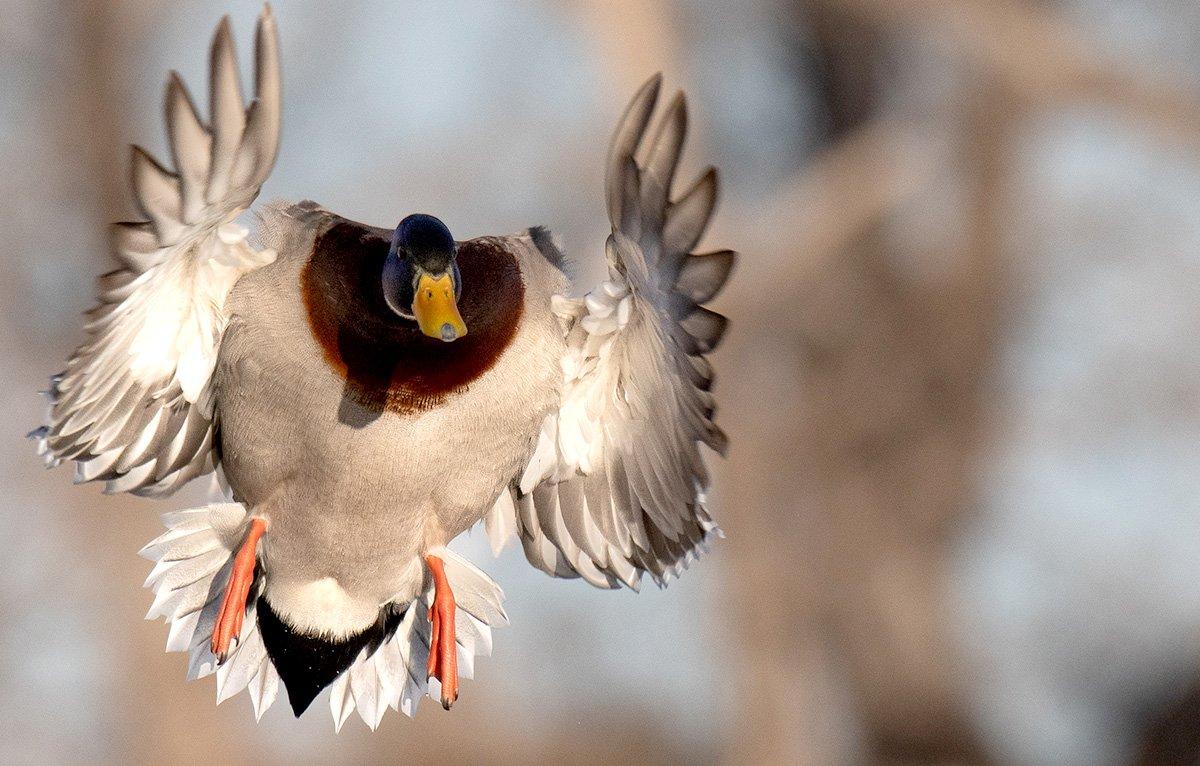You don't have to be a skeet champion to consistently bag birds. Here's how to set up shots at ducks and geese that are so easy, even you can't miss!
The old guy stunk at skeet. I mean, he was a positively terrible shotgunner. But his Polaroids from the duck blind told a different story.
I ain't a great shot, he said repeatedly. But I've learned to put birds in my lap so I don't have to be.
Basically, the old-timer used hard-earned knowledge and experience to create the best possible shooting opportunities — the wings-back, feet-down gimmes that lead to doubles, triples and quick limits. And the principles he used can help you increase your bird pile while decreasing your ammo bill.
That doesn't mean we shouldn't strive to become better wing-shooters. Still, most of us reach shooting plateaus after a while, and striving to create easier chances can boost efficiency. Try these tips to put birds in your face for sure-kill shots.
Setup
Most guys locate birds and plop down right on the X. That's usually fine, but some situations demand that you tweak your location based on how birds will likely approach. The basics — where birds are traveling and where they want to congregate — provide a starting point. But always consider the wind, sun and other environmental factors when picking a setup.
For example, it's always wise to keep the rising or setting sun behind you so it obscures the vision of approaching birds and helps conceal you. Likewise, when hunting during a fairly strong wind, place your boat or blinds to one side of your decoys, not directly upwind. Otherwise, approaching ducks or geese will be looking right at you as they cup in. In both situations, setting up with a crosswind or quartering wind might actually help birds finish closer.
In addition, always consider cover when choosing a setup. I'd rather set up a few yards off a hot feed or travel route if a secondary spot offers superior concealment. Ducks and geese simply won't finish if they see something out of place.
Concealment
I'm a broken record about the importance of cover, but it's true. Concealment comes in many forms — vegetation, shoreline rocks, tall trees or horizontal blinds that hide your profile — but you can't take it for granted, and you rarely have too much. If you become invisible, ducks and geese will focus on your decoys and calling. They'll be more relaxed and finish far better than if they were suspicious.
First and foremost, always try to eliminate your profile by having adequate cover behind you or to your side. That might involve crouching by a rock pile, hugging a gum tree or sitting in tall cattails. Second, try to match the hatch by making sure your boat, blind and clothing blend into the environment. Great camo — such as Realtree Max-5 and Timber — helps, especially in open areas. Also, use natural materials — grass, weeds, brush or crop waste, for example — to hide sharp edges and unnatural colors. Oh, and cover your face. Nothing shines in the sun like rosy cheeks and a big forehead.
Decoy Configuration
Some days, birds might splash down amid a shapeless, random mass of decoys. Careful configuration of your spread, however, will guide their approach and dictate their landing area.
Whether you're hunting with 12 mallard floaters or 150 magnum bluebill blocks, always leave a generous landing area, or kill hole, where birds want to land. Position your boat or blind within easy shooting distance of that hole.
Further, consider the birds you're hunting. Diving ducks love to fly over their own kind on approach, much like following a runway. That's why long tails stretching downwind from a main spread work well to guide them home. Puddlers often act in opposite fashion, preferring to sail down in a more vertical approach to open holes. Clearly define your puddler kill hole by plugging gaps in your spread with more decoys.
And always consider motion, especially on relatively calm days. Spinners, pulsators, jerk strings or swimming decoys can spell the difference between fooled birds and flaring flocks.
Calling
Some days, calling seems to have little effect on waterfowl, especially ducks. But in other situations — flooded timber or during foggy conditions, or when running traffic fields for geese, for example — sounding like a real bird pays off big. And many other days, well-timed quacks, chuckles, whistles, clucks or come-back calls might help otherwise hesitant ducks or geese flip their wings and approach even a few yards closer.
The bottom line? Learn to sound like ducks and geese. It'll never hurt your success. And when sound becomes important, solid calling skills often get birds closer for better shots.
Say When
All the aforementioned considerations are moot if you don't know when to call the shot. Every year, I see guys jump up and pound away at 40-plus-yard birds that would have floated into their laps. And just as often, I watch pit bosses wait a second too long, only to leave their charges shooting at the butts of departing ducks or geese.
This skill has no secrets. Observe birds and their body language to determine the best possible time to say shoot. Sometimes, that means ducks or geese are mere feet off the water, hovering almost motionless. In other cases, it might involve birds that hit the 30-yard-mark but then decided to continue on. Only experience can teach you when the time is right.
Oh, one more thing: Don't let ducks or geese get too close. A 10-yard shot might look appealing, but it's awfully easy to miss a bird when your pattern is the size of a nickel. Then again, that's a pretty good problem to have.
Click here for more Realtree waterfowl hunting content. And check us out on Facebook.







